The problem with the Scottish Government’s response to the Werritty Review (see here), which I blogged about almost a year ago (see here), is that fails to tackle the central issue, the intensification of moorland management in order to produce more grouse for shooting. The conversion of Scotland’s moors into vast farms for grouse is having serious consequences for climate change, nature conservation and for people in the countryside. The response to the Werritty Review effectively commits the Scottish Government to tinkering around the edges. Without addressing the central issue, any attempts to limit some of its damaging impacts in isolation may well result in further damaging consequences. This post explains why.
Muirburn
The single most sensible proposal in the Scottish Government’s response is to ban muirburn on peat bogs, which lock up more carbon from the atmosphere than forests or other soils. Allowing some to continue to go up in smoke when the Scottish Government has just committed to spend £250 million over the next ten years on peat bog restorations would be clearly mad. How large an area will be covered by this ban cover is less clear and less certain.
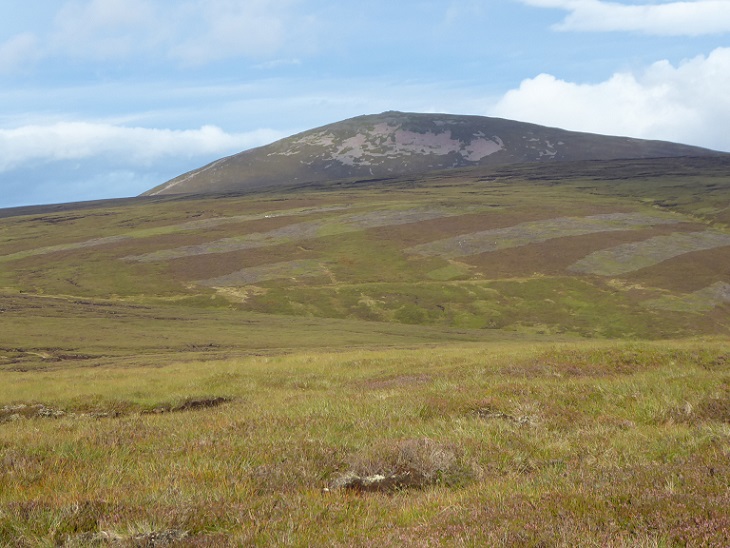
The Scottish Government has committed to looking at the the current definition of a peat bog but there is likely to be huge opposition from landowners to any extension. Once this is decided, lots of resources and time is likely to be consumed trying to work out what land is covered by the ban and what not. A wasteful exercise which, like mapping “access land” in England, could lead to endless local disputes.
In isolation, the decision to protect peat bog from muirburn, could also actually result in increased destruction of peat. Some grouse moor managers will be anxious to ensure that areas they currently burn are not classified as peat bog when the new system is introduced. On the Invercauld Estate, for example, muirburn is currently practised with little or no regard for what lies beneath (see here). One way to ensure that muirburn could continue would be to intensify burning further to ensure that these areas won’t fit the new classification for peat bog. And if that fails, the landowner could start digging up areas of peat bog outside of Sites of Special Scientific Interest to ensure that they remain classified as moor, not bog.There is nothing in the law (see here) to prevent them doing either at present.
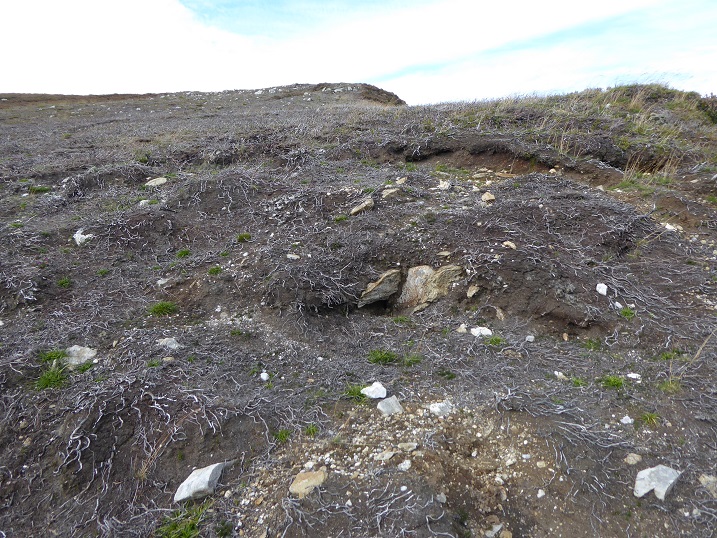
Offering greater protection to peat bogs won’t deal with the wider issue which is that muirburn damages peat and other soils, wherever it is conducted. The Scottish Government is proposing that burning outside of areas classified as peat bog should be governed through a new licensing system and a “refreshed” Muirburn Code. Currently the Muirburn Code (see here) advises against burning on areas of peat over 50cms thick or on thin soils less than 5cm thick. That advice is widely ignored, which is why the Scottish Government is proposing to extend statutory protection to all peat bogs, but trying to enforce it as part of a licensing system is likely to be even more challenging than protecting bogs. Even if the proposed system did prove effective at ending muirburn on thin soils and peat over 50cm thick, that still leave huge areas of land where burning will continue.
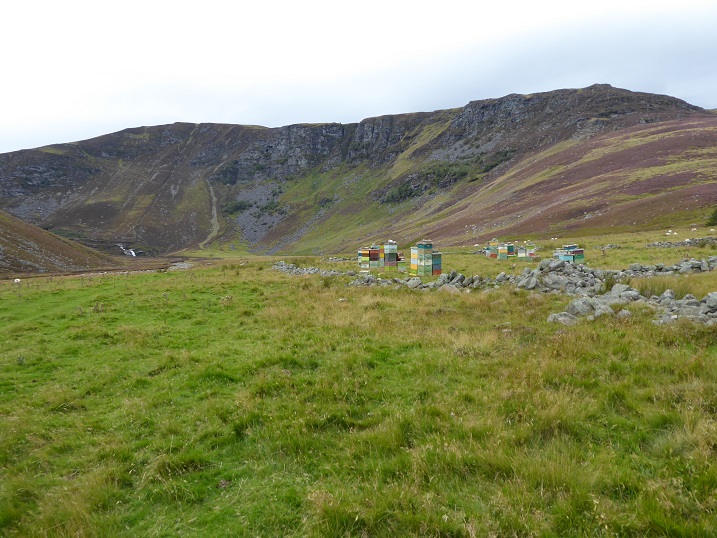
Muirburn prevents soils from building and effectively stops all woodland expansion, another government target. Current Scottish Government thinking appears to be that they want lots more woodland, so long as it’s not on a grouse moor. The landscape that results is poor at storing carbon and is capable of supporting little wildlife, apart from unnaturally high numbers of red grouse, some mountain hares and the animals that prey on both which are relentlessly slaughtered.
Heather Cutting
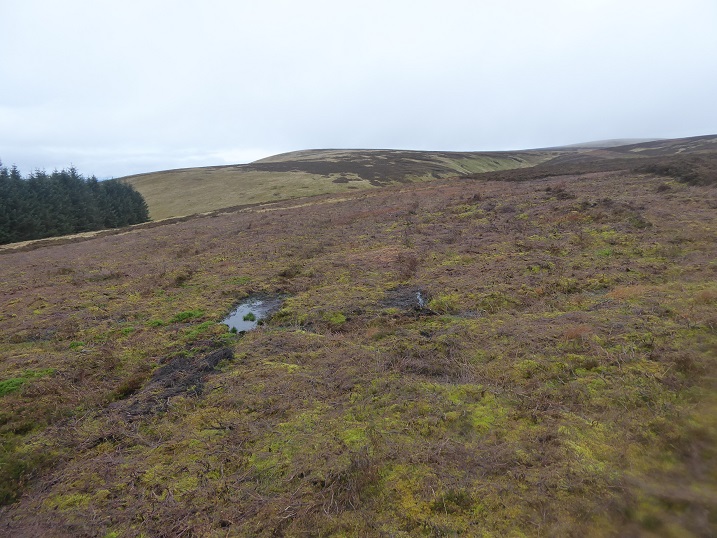
Even if muirburn was completely banned tomorrow, however, estates could still manage moorland to produce unnaturally high numbers of red grouse through heather cutting. The Muirburn Code now includes a brief section on this practice but it is even less prescriptive than the section that deals with actual muirburn. Apart from saying care should not be taken to damage soils and vegetation, it seems the only limitation on heather cutting outside of SSSIs is the technology. This is improving the whole time and making more and more areas of moorland accessible to cutting.
The Scottish Government’s response to Werritty says nothing about heather cutting, not even on peat bog. Unless the Muirburn Code introduces new provisions to control this, all that will happen is that where muirburn is constrained under the new licensing system, managers will shift to these newer techniques of promoting heather at the expense of other plants and very little will change.
Other ways grouse moor management impacts on peat bogs
Protecting peat bogs from muirburn, whatever the unintended consequences, won’t save them from the other damaging practices associated with intensive grouse moor management. In October I walked down the south-east shoulder to Carn Bhac at the head of Glen Ey on the Mar Estate.
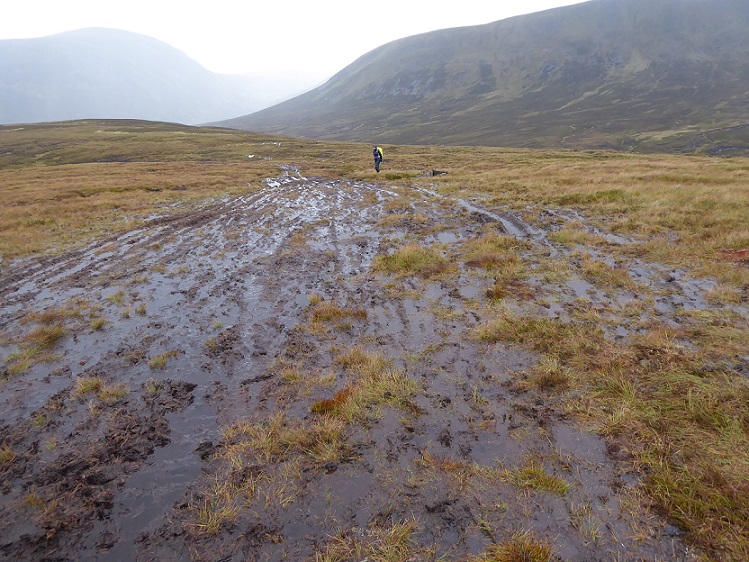
There is nothing in the Scottish Government proposals to prevent estates constructing new grouse butts in areas of peat bog. Unless the butts are constructed above ground as wooden “shields” and access is by foot, the inevitable consequence is the surface of the bog gets broken up, damaging the peat and altering the hydrology.
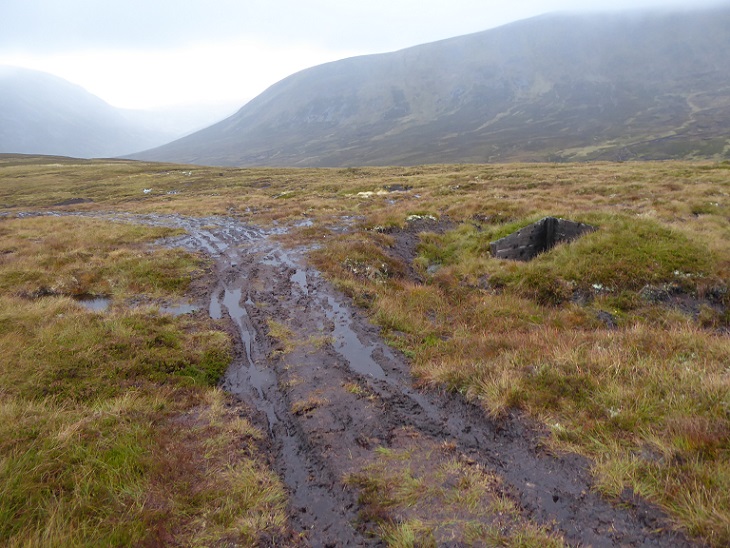
In the case of Carn Bhac, I found out afterwards that the area traversed by this ATV track was part of a peat bog restoration scheme c2015. What is the point of forking out large sums of public money on restoration, if landowners and managers are still allowed to dig holes in the bog and drive all over it?
There is nothing either in the Scottish Government’s new proposals to control the use of ATVs. While NatureScot has powers, which it almost never uses, to stop the use of ATVs on peat bogs designated as SSSIs, that only covers a proportion of our peat bogs in Scotland. The extensive area of peat bog south and east of Carn Bhac is not protected as a SSSI.
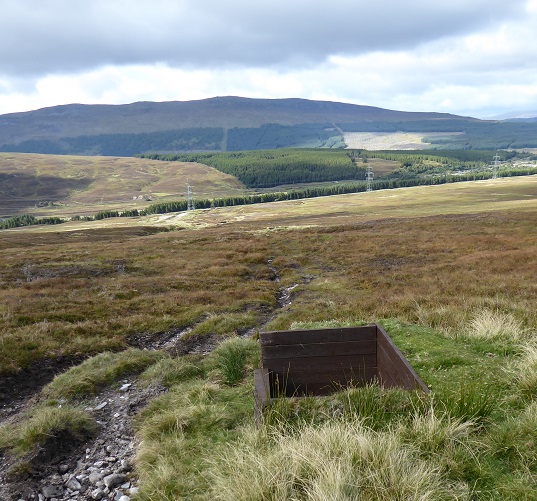
In theory, one way of partially addressing this issue would be to bring the construction of grouse butts into the planning system. Permission for butts could be limited to areas where their construction would do no damage and conditions attached to forbid ATV use, which creates new tracks by default. Unfortunately, not even this moderate measure appears to be on the table.
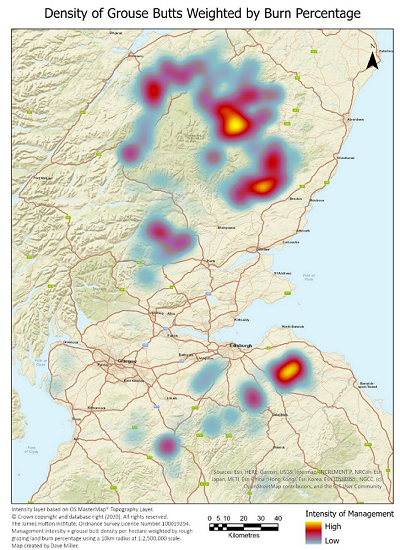
Grouse butts enable those who indulge in shooting to get far larger bags than would otherwise be the case. It is the desire, the social kudos, of large bags which lies behind driven grouse shooting and has driven the intensification of grouse moor management. That is well illustrated by recent research (see here) which mapped the intensity of muirburn against the existence of grouse butts. (If you mapped tracks and ATV damage against grouse butts you would get a similar result). The map shows that much of the most intensive grouse moor management in Scotland occurs in the Cairngorms National Park.
There is no recognition in the Scottish Government’s response to Werritty that additional controls over grouse moor management might be justified in our National Parks, particularly in the Cairngorms. Our National Park Authorities do have byelaw making powers which, if they were allowed to use them, could introduce additional controls over grouse butts, ATV use etc. The message is the Scottish Government sees nothing wrong in trying to farm wild animals to produce unnaturally high numbers for shooting even in our National Parks.
Protecting landowners’ ability to produce high numbers of grouse
It would be pointless to continue to allow landowners to manage their land to maximise numbers of red grouse, only for them them to die or be gobbled up before the great sporting day in August. Preventing disease through the administration of medicated grit and killing off the mountain hares that carry it, along with the elimination of predators, are therefore integral to the sustainability of driven grouse moor management. The Scottish Government’s response implicitly recognises some this when it states “medicated grit has helped iron out fluctuations in grouse numbers“, i.e kept them high enough to satisfy shooters.
On these matters the Scottish Government’s new proposals appear to represent a compromise between keeping grouse numbers as high as possible while satisfying the court of public opinion about what practices are no longer acceptable. On the one hand the government’s response confirms the additional protection for mountain hares (a new code is promised too), which it was forced to accept after a vote in the Scottish Parliament, and introduces the possibility that grouse shooting could be banned on estates which are proven to kill raptors. On the other hand it allows the continued use of medicated grit in the countryside – NatureScot will introduced yet another Code of Practice – and the continued trapping and persecution of mammalian predators and corvids.
What this means for the Cairngorms National Park is that the Scottish Government still believes that it acceptable that a large proportion of the land within its boundaries is used to farm grouse (and other game birds) rather than for conservation.
Why a licensing system won’t make much difference
The Werritty Review was asked to consider the introduction of a licensing system for grouse moors, primarily as a means to increase protection for raptors. A majority of the Review panel supported licensing but, in order to get the landowning interests to agree, they suggested estates should be given another five years to put their house in order. One year later the Scottish Government has decided to start work on a licensing system now. It may well take two years to set up, giving landowners plenty of time to pre-empt any new controls.
While licensing will introduce a risk that the right to shoot could be removed if raptors continue to be persecuted, the history of the last twenty years is that there have been almost no successful prosecutions for the dozens of raptors that have disappeared. In June Raptor Persecution Scotland listed 74 cases (see here) of raptor persecution in the Cairngorms National Park since it was created in 2002. These have resulted in just one successful prosecution and that was back in 2003. The introduction of Special Constables to help tackle wildlife crime in the Cairngorms in 2018 had, a year later, made no difference (see here). The Scottish Government’s announcement of higher fines for raptor persecution is unlikely to be a deterrent either.
The underlying issue is that so long as the Scottish Government accepts that the slaughter of stoats, weasels, foxes or jays is justifiable to allow a few to enjoy their “sport”, those asked to carry out this persecution are unlikely to see much difference between killing an eagle and a killing a stoat. All are “vermin” from the grouse farmer’s perspective. None of the measures the Scottish Government is proposing will work unless there is a revolution in the way grouse moors are policed which results in a reasonable proportion of those responsible being caught. Tagging estate vehicles (see here) as part of the licensing system might be a start but proving a wildlife crime would nevertheless be very difficult.
Besides lobbying to ensure that the licensing system is an ineffective as possible, landowners will have various options to try and get round the withdrawal of licenses. Where grouse moors are leased, there will no doubt be debates about whether it should be the tenant, the landowner or both who should lose their license. This argument becomes more complex where there is more than one shooting tenant and there will be legitimate arguments about why one tenant should lose their license for actions allegedly taken by the another. Landowners could also mitigate against the remote likelihood they might lose their licences by splitting up tenancies into smaller units, with a different person at the head of each, and even dividing up their land so that it is held by a number of companies. Who then loses the licence?
What needs to happen
In my view licensing is likely to be costly, bureaucratic and ineffective and new blanket measures to protect mountain hares and ban muirburn on peat bogs, despite all the loopholes, are likely to be more beneficial What conservationists shouldn’t do is allow the Scottish Government’s announcement of a licensing system to undermine or end calls for there to be a much stronger controls over grouse shooting in the Cairngorms National Park.
The practice of driven grouse shooting and the intensive land management practices associated with it are generally totally incompatible with the conservation objectives of our National Parks. What conservationists should be arguing for, therefore, is for all driven grouse shooting to be phased out in the Cairngorms National Park. Prince Charles, as President of WWF, could lead by example at Delnadamph (see here).
Unfortunately the CNPA appears, on occasion, to endorse practices associated with intensive grouse moor management. The Cairngorms Capercaillie Project (see here) has just recruited 8 staff, one of whom is a gamekeeper who will be employed by Seafield Estates. There is nothing in the project brief to explain what that gamekeeper will be doing or to justify their employment, but their title suggests they will be eradicating foxes rather than stalking red deer to enable existing areas of woodland to regenerate naturally and provide more habitat for the capercaillie. Perhaps the CNPA is using the Capercaillie Project as an opportunity to demonstrate to other gamekeepers the difference between good predators (pine martens and eagles) and bad predators (vermin)?
Meantime, instead of NatureScot becoming the licensing authority for the whole of Scotland, as the Scottish Government is proposing, the CNPA could be made the licensing authority for the Cairngorms. That would ensure far more effective join-up between its staff, who are trying to improve grouse moor management through the east Cairngorms Moorland Partnership, and the new licensing regime. Will their Board be brave enough to call for that?
This and successive Scottish Governments (principally SNP majority govts.) will never have the nerve nor the audacity necessary to make wholesale changes. Changes which have to start at the top; namely, the Royal estates and those owned by nobility. If HRH was to take the lead, I think others would surely follow but currently the SNP need landowners on their side so worthwhile, meaningful change won’t happen; meanwhile the SNP will continue to brag about how they are looking after the country for its citizens.
I agree wholeheartedly. My greatest wish is, before I die, is to see the complete banning of Grouse Shooting. Its existence continues to cause much damage to the Cairngorms, parts of the Southern Uplands and huge areas of Yorkshire. I live on the outskirts of Sheffield and witness needless burning of many hectares of moorland just a few miles from my home. The effect on the flora and fauna is devastating!
I wish someone like David Attenborough would visit these areas and issue a public statement to the Scottish Government and the Westminster Government, about their lack of willingness to address the situation!
I don’t think HRH would ever give up his Grouse moors nor would he ever criticise landowners who perpetuate the Grouse shooting!
Yes, the Scottish Government’s response to the Wherrity Report and its subsequent announcements on potential grouse moor management is just political window dressing, and will simply permit the growth of intensive land management for driven grouse shooting to continue unabated. It’s about time The Scottish Government understood that driven grouse shooting is a practice that has no place in any environmentally AND economically sustainable future for Scotland.
Operating in the tourism industry within the Cairngorm’s National Park, we are regularly asked by visitors about the regular ‘patchwork’ of heather and grassland on the mountains. Visitors are usually appalled when they learn that this is not a natural landscape, but the result of intensive grouse moor management for shooting. We point to areas like Wildland’s Glenfeshie Estate as examples of what a more natural Scottish mountain landscape should look like. Tourism is becoming much more environmentally conscious. By claiming to protect the dubious economic benefits of driven grouse shooting by not either banning this outdated practice or at least largely eliminating its adverse environmental impact, the Scottish Government is threatening the future of nature tourism and the enjoyment of our mountains by both UK and overseas visitors.
Additionally, intensive grouse moor management and the associated obsession with trapping and killing ‘vermin’, shows that these grouse moor operators are not heeding important parallel research conducted by Forestry Land Scotland in their programme to increase capercaillie numbers. FLS stated on its website (https://forestryandland.gov.scot/blog/success-story-for-capercaillie-in-strathspey?highlight=environmental%20research) “Our wildlife experts are also interested that capercaillie numbers are increasing at a time when other potential predators have too. They believe that each of the predator groups are naturally keeping numbers down which in turn has had positive spin offs for the capercaillie.” I quote from FLS’s Keny Kortland, “We think that the various predators are controlling each other and this allows the capercaillie to thrive. For example, goshawks are recent colonists of these woods and they are eating a lot of crows, which eat capercaillie eggs. Similarly, foxes prey upon pine martens, which eat capercaillie eggs and young. This all challenges the dogma that predator control is crucial for the persistence of grouse populations.”
Unfortunately, the grouse moor estate owners are either not listening, or are simply living in the past. It’s also about time the CNPA took some real action to control this unsustainable environmental destruction of our moorlands and mountains. They are great with words and policies and desperately poor with actions.
Almost Two decades on from the purchase of this very small coastal croft, with acreage lying within an ill monitored region supposed to possess SSSI value ,it has been fascinating to observe how with careful management the marginal highland landscape can recover. Previously this croft was poorly defined, partly over grazed by cattle, sheep and deer, routinely burned back, in some forelorn hope of encouraging fresh regrowth ? Sold off 25 years ago by principals to meet estate duty burden,s the croft area was ring fenced off. For several years no stock was run over it apart from roaming deer, it became totally abandoned for agriculture. Since then through these recent years has been possible to reclaim the best well drained grassed areas from bracken and bog rush growth by using native sheep. A single flail mow is done of well drained places each year. Because sheep are keener on the managed grass patches than for ever searching for some nutrition among the heather, the whole croft is now in far better health. Today we note trees are self seeding. Mature woody stands of higher heather creates smaller habitats for ground nesting birds, mosses and Lichens. We now have pheasant partridge and grouse who live here – each a clear migrant from more dangerous hunted land that surrounds us. We see buzzard, crows, ravens, curlew, partridge, grouse of course ,hawks and migrants such as geese and duck, but also badger, otters, mink (*%&$*) , as well as pine martens, weasels and stoats. One area of over-grazed stunted pine seedlings near the house is now “in bye ground” protected by full deer fence. Within this vital fence a small woodland is regenerating again with scots pine, oak, willow, ash, birch ( ponticum,) which we must control) occasional larch among the alder and rowan. Even beech seedling appear- self seeding, – probably the result of bird droppings. Each year we enhance this place by adding a few more locally acquired native tree seedlings. All this improvement has taken place naturally because with stock reduced to sustainable levels and care to eliminate invasive bracken and those “himalayan weeds”. We discovered just a small handful of native sheep will keep our hill ground healthy all year round. They of course are wonderful characters who greatly prefer grazing real grass fields. Now our field areas are largely free of rushes thanks to free running drainage and seasonal use of a high floatation lightweight tractor with flail mower..(no chemical, lime or artificial sprays) Our few elderly Hebridean sheep are joined at night time by routine passers by…local deer, and of course happy holidaying visitors who marvel at it all, in correct season of course ! A microcosm of what so much of highland Scotland might be restored to ?
Pretty sure there has been almost no Grouse shooting on any estates in the Cairngorm area over the last 3 years with the Grouse numbers so low, and while the persecution of any species should be stopped i have a hard time blaming just landowners.
After all the RSPB has killed 598 Foxes not including the Cubs in the Den and 800 Crows in one year.
2,719 animals and birds were exterminated by the Society over the course of just twelve months in a Civid year.
Surely if you want the estates to stop culling wildlife it must be the same rule for all.
I’d be interested to know where the numbers come from but I agree with you, it should be same rules for all
Hi Nick,
The info comes from the RSPB website under the freedom of information act that they were required to provide.
No need to ask who the contractors were, the same guys that enjoy shooting on Grouse moors i believe.
Below are tables summarising the vertebrate control undertaken by RSPB and our contractors on reserves during the period 1 September 2016 to 31 August 2017, and during the period 1 September 2015 to 31 August 2016 for comparison. Only reserves where control was undertaken during the year have been included. Vertebrate control commissioned by third parties as part of existing rights is not included here.
These numbers were from four reserves and outside the reserve area, so carried out on private land.
a) For conservation reasons
Species
2015/16
2016/17
Reason
No. of reserves
Total killed No. of reserves Total killed
Feral Barnacle Goose (eggs)
1
101
0
0
To protect ground-nesting birds
Ruddy duck
1
1
0
0
UK eradication project to benefit White-headed Ducks
Grey squirrel
2
14
2
11
To protect Red Squirrels
Carrion/Hooded Crow
14
475
15
528*
To protect ground-nesting birds
Deer – Fallow
6
78
5
59
To restore woodland
Deer – Muntjac
3
33
4
55
To restore woodland
Deer – Red
9
299
9
432
To restore woodland & heathland
Deer – Roe
9
334
7
375
To restore woodland
Deer – Sika
2
176
3
105
To restore heathland & woodland
Fox
33
390
37
414**
To protect ground-nesting birds
Gull – Large (adults)
2
8
1
11
To protect terns
Gull – Large (eggs)
3
Not recorded
4
>33
To protect terns
Mink
15
81
16
103
To protect Water Voles
Stoat
1
1
0
0
To protect ground-nesting birds & Orkney Voles on Orkney, where recently introduced
* Plus 133 killed (by shooting and Larsen trap) through the Curlew Trial Management Project, although this includes individuals killed in the wider area, not just on the reserve itself
** Plus 20 killed (by shooting) through the Curlew Trial Management Project, although this includes individuals killed in the wider area, not just on the reserve itself
Better to post the link. lol
https://community.rspb.org.uk/ourwork/b/martinharper/posts/the-conservationist-39-s-dilemma-an-update-on-the-science-policy-and-practice-of-the-impact-of-predators-on-wild-birds-5
I note the forestry say,
We think that the various predators are controlling each other and this allows the capercaillie to thrive. For example, goshawks are recent colonists of these woods and they are eating a lot of crows, which eat capercaillie eggs. Similarly, foxes prey upon pine martens, which eat capercaillie eggs and young. This all challenges the dogma that predator control is crucial for the persistence of grouse populations.”
Can some point me in the direction of the study regarding Foxes preying on Pine Martins.
A well made point Gordon, sadly we don’t have the same level of transparency from landowners within the National Parks of the extent of “legal” culling of predators such as weasel, stoat. pine martin, fox, corvids, gulls, hares, beaver etc. and INNS (mink, boar, muntjac deer, sika deer, pheasants, partridge etc.) ……… and of course the extent of illegal culling of raptors.
Yawn!
How many mice have you trapped and cat killed?
Let us know how many insects you have killed with your car.
Hi Graham,
I agree and think transparency is the key, something that sadly will never happen, i only mentioned the RSPB as they had to publish the records of the Wildlife they killed after a freedom of information request was forced on them, before that for many years it was hidden.
I am still bemused by the forestry quote that Foxes kill numbers of Pine Martins as i have filmed and watched Pine Martins and other species for many years and long before the disastrous and expensive National Park was formed.